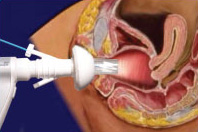Gynaecology
Gynaecology (or Gynecology in American English) is the branch of medicine that focuses on the health of the female reproductive system, including the uterus, ovaries, fallopian tubes, and vagina. Gynaecology often overlaps with Obstetrics, which deals with pregnancy, childbirth, and postpartum care. Together, these fields are commonly referred to as Obstetrics and Gynaecology (OB-GYN).
Etymology
The term "gynaecology" comes from the Greek words gynē meaning "woman" and logia meaning "study of." Thus, genecology is the study of women, particularly concerning reproductive health.
History
Antiquity
The study of gynaecology dates back to ancient civilizations. One of the earliest known medical texts, the Kahun Gynaecological Papyrus from ancient Egypt (circa 1800 BCE), addresses issues such as fertility, pregnancy, and menstrual problems. In ancient Greece, physicians like Hippocrates and Aristotle made significant contributions to understanding female reproductive health.
Modern Gynaecology
Modern gynaecology emerged in the 19th century, with contributions from American physician J. Marion Sims, who is often referred to as the "father of modern gynaecology." Sims developed surgical techniques for treating vesico-vaginal fistulas, a common childbirth injury. However, his work remains controversial due to ethical concerns regarding experimentation on enslaved women.
Common Conditions
Gynaecologists diagnose and treat a wide range of conditions affecting the female reproductive system, including:
- Menstrual Disorders: Such as dysmenorrhea (painful periods), amenorrhea (absent periods), and menorrhagia (heavy periods).
- Infertility: Difficulty in conceiving or maintaining a pregnancy.
- Gynecological Cancers: Including ovarian, uterine, cervical, and vulvar cancers.
- Endometriosis: A condition where tissue that normally lines the uterus grows outside it.
- Pelvic inflammatory disease (PID): An infection of the reproductive organs.
- Polycystic ovary syndrome (PCOS): A hormonal disorder characterized by enlarged ovaries with small cysts.
- Urinary incontinence: Loss of bladder control, often related to pelvic floor disorders.
Diagnostic Tools and Procedures
Gynaecologists use various diagnostic tools and procedures, including:
- Pelvic Examination: A routine exam to assess reproductive organ health.
- Pap smear: A screening test for cervical cancer.
- Ultrasound: To examine the uterus, ovaries, and pelvic structures.
- Laparoscopy: A minimally invasive procedure for diagnosing conditions like endometriosis and fibroids.
- Hysteroscopy: A procedure to inspect the inside of the uterus.
Surgical Interventions
Gynaecologists often perform surgeries to treat reproductive system conditions. Some common procedures include:
- Hysterectomy: The removal of the uterus, often used to treat fibroids or cancer.
- Oophorectomy: Removal of one or both ovaries.
- Dilation and Curettage (D&C): A procedure to remove tissue from inside the uterus, often after a miscarriage.
- Tubal ligation: A permanent contraception method where the fallopian tubes are cut or blocked.
- Pelvic Organ Prolapse Surgery: To repair and reposition organs that have dropped from their normal position.
Subspecialties
Several subspecialties exist within gynaecology, focusing on specific areas of women’s health:
- Gynaecological Oncology: Treatment of cancers affecting the female reproductive organs.
- Urogynecology: Focused on pelvic floor disorders, including urinary incontinence.
- Reproductive Endocrinology and Infertility: Addressing hormonal issues and treatments for infertility.
.png)
.png)
